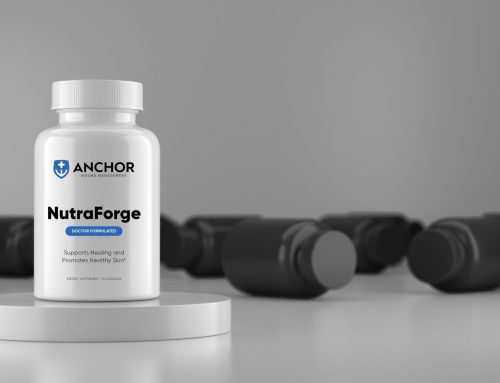Importance of Surgical Aftercare
Proper surgical aftercare cannot be overstated.
Immediately following surgery, the body undergoes essential phases of healing. The initial phase involves an acute inflammatory response, which aims to combat infection and initiate tissue repair. Therefore, adhering to prescribed wound care with surgery patients helps mitigate risks. Moreover, it sets the stage for the crescendo of recuperation in subsequent weeks.
Professional guidance is paramount during post-operative care.
Equipped with detailed aftercare instructions, patients can navigate the recovery period confidently, ensuring their actions align with medical advice. This diligence in following routines directly impacts the healing process.
By prioritizing aftercare, patients inherently empower their bodies to heal most effectively. In turn, this vigilance fosters a foundation for lasting recovery, exemplifying the quintessential partnership between patient diligence and professional care.
Cleaning Surgical Wounds
Thorough and gentle cleaning is paramount in managing surgical wounds effectively. Regular cleaning minimizes the risk of infection, paving the path for optimal healing.
Patients should always follow their healthcare provider’s instructions.
By adhering to prescribed wound care with surgery patients, one ensures the wound remains clean and free from potential contaminants. This involves not only the act of cleaning but also the timely changing of dressings.
The area should be rinsed with a sterile saline solution or a solution recommended by the healthcare provider. Sterile gauze or cotton swabs should be used to gently clean the wound, taking care to avoid excessive rubbing.
Appropriate Dressings for Surgery Patients
Selecting the appropriate dressings can significantly impact the recovery of surgical patients.
Over the years, advancements in medical materials have vastly improved outcomes for surgical patients. These dressings not only protect but also promote faster healing.
For optimal results, it’s essential to identify each patient’s specific needs and tailor the dressing solutions accordingly. This customization ensures reduced infection rates and overall quicker recovery times.
Modern dressings come equipped with antimicrobial properties, moisture management systems, and varying levels of absorptive capacity. These innovations allow for tailored approaches that enhance the healing process.
Ultimately, appropriate dressings are a crucial component in effective wound care with surgery patients.
Monitoring for Infection
Monitoring for infection is imperative to successful wound care with surgery patients, as even minor infections can complicate recovery times.
Recognizing the early signs of infection can prevent serious complications.
Healthcare professionals must be vigilant in assessing signs such as a sudden increase in redness, swelling, or warmth around the wound, coupled with unusual pain or discharge.
Frequent temperature checks and careful observation are key to catching early indicators. If any signs of infection are detected, immediate communication with the healthcare provider for intervention is essential to ensure prompt and effective treatment. Utilizing advances in diagnostic tools and maintaining a proactive approach instills confidence and encourages a swift return to optimal health.
Managing Drainage and Bleeding
Managing drainage and bleeding involves a thorough understanding of wound characteristics, patient conditions, and the mechanisms of post-operative care, necessitating a meticulous and professional approach to ensure optimal recovery.
Healthcare professionals must assess the type and amount of drainage.
Routine monitoring allows for assessing drainage characteristics, promptly addressing issues, and ensuring recovery progresses smoothly.
Equally vital is controlling bleeding to prevent complications, demanding vigilance for excessive or sudden bleeding and immediate response protocols to manage such events with precision.
Ultimately, the goal is to manage every patient’s postoperative needs effectively. Continuous education and a steadfast, proactive approach guarantee high-quality care, enhancing overall patient outcomes.
Caring for Stitches and Staples
Proper care for stitches and staples is critical to healing, reducing infection, and minimizing scarring. Patients must recognize the importance of this aftercare.
Gently clean the area with mild soap and water.
Avoid harsh scrubbing, which could irritate the wound. Patting the area dry is recommended.
Monitor for signs of infection, such as increased redness, swelling, or unusual discharge.
Stitches usually need removal within 5 to 14 days, depending on the location and nature of the surgery. Staples might require a similar timeframe.
Patients should follow their healthcare provider’s instructions closely. Adherence to these recommendations fosters optimal healing outcomes.
Recognizing Signs of Complications
Knowing when to seek medical attention is pivotal.
After surgery, patients must stay vigilant for signs of infection. This includes monitoring for increased redness, swelling, or unusual discharge from the wound site. Additionally, intense or worsening pain can be an indicator of complications. Prompt attention to such signs ensures timely intervention and optimal recovery.
A rise in body temperature warrants concern. Unexplained fever can signify an underlying infection – in such cases, patients should contact their healthcare provider immediately.
Continued discoloration or foul odor from the incision site demands urgent evaluation, as these symptoms may point to an infectious process impeding the healing journey.
Healthcare providers should emphasize the importance of recognizing complications as part of comprehensive wound care with surgery patients. Through dedicated patient education and vigilant post-operative monitoring, they can significantly enhance the healing process, ensuring a swift return to health.
When to Contact a Healthcare Provider
Any respiratory distress, such as difficulty breathing or shortness of breath, should prompt immediate medical consultation.
Patients must never ignore chest pain as it requires urgent professional evaluation.
Severe or unmanageable pain could indicate complications that necessitate a healthcare provider’s insights to mitigate potential setbacks and facilitate smooth healing.
If there is persistent bleeding or if the wound shows signs of infection—such as spreading redness, intense swelling, or a significant increase in discharge—patients must seek professional advice without delay. Such quick actions are vital in preventing severe complications and promoting a quicker, trouble-free recovery. Their journey towards wellness hinges on proactive and informed care choices, ensuring they regain their strength and vitality.
Long-term Scar Management
The journey towards optimal healing extends well beyond the initial closure of wounds.
Effective long-term scar management is paramount to achieving the best aesthetic results.
Proper wound care with surgery patients necessitates ongoing vigilance to promote healing and reduce scar visibility. Techniques such as silicone gel sheets, consistent moisturizing, and gentle massage can significantly affect scar appearance, fostering smoother skin.
Additionally, healthcare providers often recommend interventions tailored to the individual’s specific needs. These may include laser treatments, microneedling, or corticosteroid injections, each playing a role in reducing scar tissue and enhancing overall skin texture. With diligence, patients can achieve remarkable improvements in scar appearance over time.
Anchor Restorative Medicine, located in Irving, TX, is dedicated to harnessing the transformative power of regenerative medicine. Specializing in advanced treatments for significant medical challenges, trauma, and aging-related issues, our clinic offers personalized care plans tailored to each patient’s unique needs. At Anchor Restorative Medicine, we pride ourselves on empathy, compassion, and a commitment to ensuring patient comfort and confidence throughout their treatment journey. Guided by our founding vision, we strive to innovate and empower individuals to regain their strength and vitality, impacting lives positively with every step. Anchored in hope and driven by innovation, we are dedicated to pushing the boundaries of medical possibilities, offering hope and healing to those in need. For more information, visit our website or contact us at (877) 567-3988.






